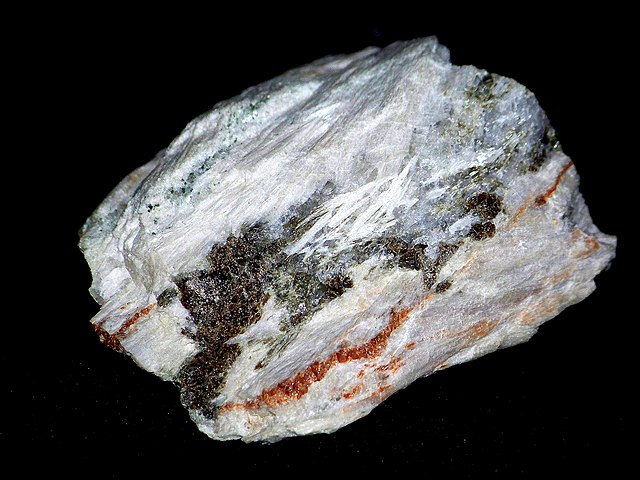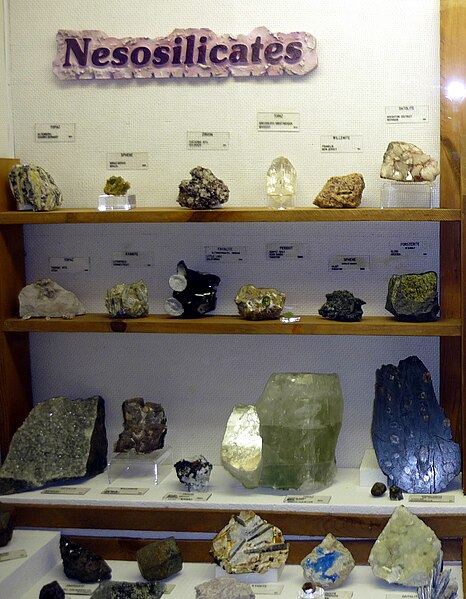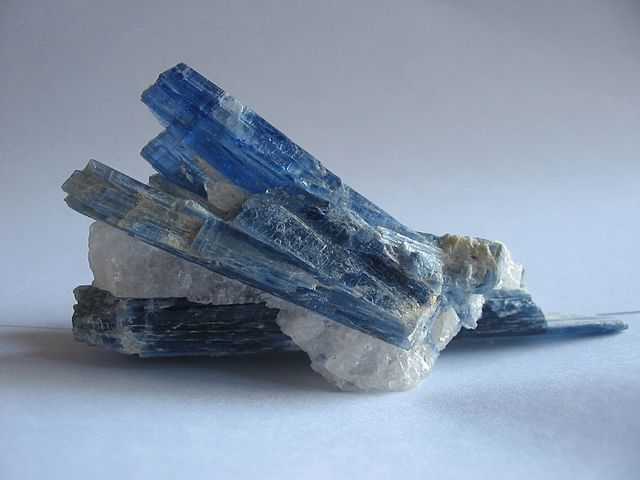Wollastonite is a calcium inosilicate mineral (CaSiO3) that may contain small amounts of iron, magnesium, and manganese substituting for calcium. It is usually white. It forms when impure limestone or dolomite is subjected to high temperature and pressure, which sometimes occurs in the presence of silica-bearing fluids as in skarns or in contact with metamorphic rocks. Associated minerals include garnets, vesuvianite, diopside, tremolite, epidote, plagioclase feldspar, pyroxene and calcite. It is named after the English chemist and mineralogist William Hyde Wollaston (1766–1828).
Wollastonite
White acicular crystals of wollastonite (field of view 8 mm) from the Central Bohemia Region, Czech Republic
Wollastonite skarn with diopside (green), andradite garnet (red) and vesuvianite (dark brown) from the Stanisław mine near Szklarska Poręba, Izerskie Mountains, Lower Silesia, Poland.
Silicate minerals are rock-forming minerals made up of silicate groups. They are the largest and most important class of minerals and make up approximately 90 percent of Earth's crust.
Lithium aluminium silicate mineral spodumene
Diatomaceous earth, a biogenic form of silica as viewed under a microscope. The imaged region measures approximately 1.13 by 0.69 mm.
Nesosilicate specimens at the Museum of Geology in South Dakota
Kyanite crystals (unknown scale)







